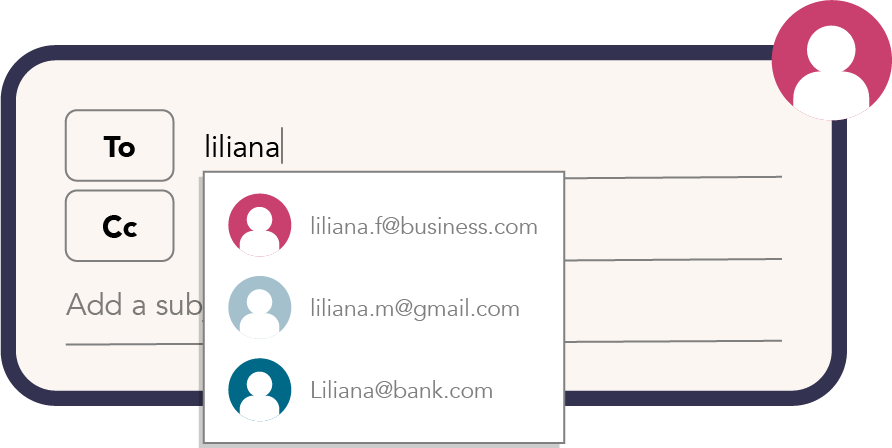Check email before you hit ‘send’
Having good online safety habits whether you’re working, shopping, browsing or doing anything online is critical to keeping information safe.
We all have information worth something to cyber criminals, and they’ll go to great lengths to get it.
You probably share your personal information online more often than you think – every time you set up an online account to buy something you’re sharing your name, email, and maybe phone number and address. In doing so, you trust the business to respect your privacy and keep your information safe.
The same goes if you work in business and use email to communicate with staff, customers, partners or suppliers.
Personal or confidential information can easily be sent to the wrong people if checks aren’t made before hitting ‘send’.
Making confidential information public can have a big impact on the business you work for and the owner of the information. Worse case, this could lead to a data breach where the impact is wide-reaching and felt by many people.
The guidance is simple! Check emails carefully before sending them!
Are the addresses in the 'To', 'Bcc' and 'Cc' fields correct?
Take extra care if you have contacts with the same name as auto-complete could pick up the wrong one.
Is your reply sensitive?
It may be best to 'Reply to sender' rather than 'Reply all'. Remember, when using 'Reply all' anyone who has been Cc'd will get your reply.
If the information is confidential and it's being sent outside of the workplace, consider using a more secure document sharing method like OneDrive or Google Drive.
Are you using a distribution list?
Double-check it's the right one and use Bcc so recipients can't see the email addresses of other recipients.
Have you attached the right document?
Rather than attaching a document which could be wrong, create a link in OneDrive or Google drive.
When you create the link, enter the recipient/s names so that no one else can access it.
What is your policy?
If your business policy requires you to use SharePoint or Google Drive links rather than attachments, make sure they’re set with the right permissions for the intended recipient/s only.
This guidance and more is covered in Mindshift’s ‘Communicating Safely’ e-learning module. Check out our website to learn more.







